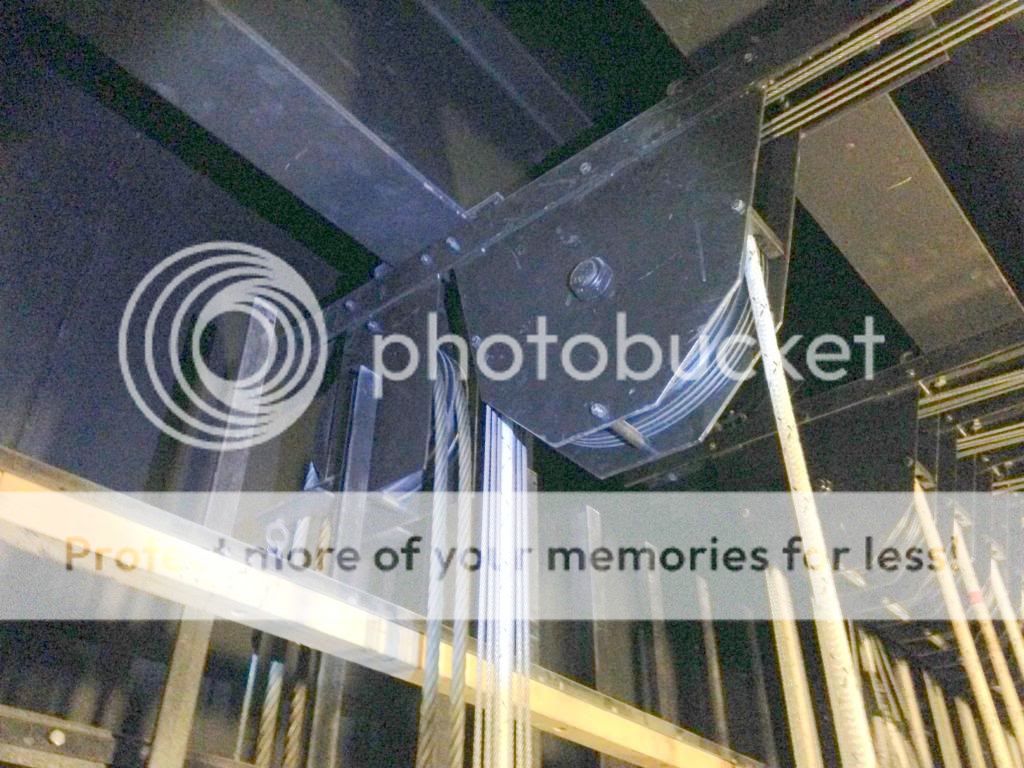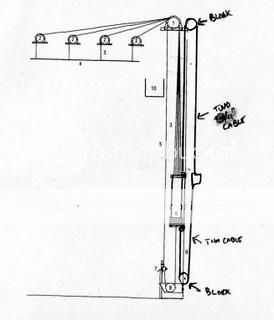We have a single-purchase counterweight rigging system with two dedicated electrics. Both are on truss with baskets on top of the truss to catch the multi cable feeding the batten. When I took over here, my predecessor familiarized me with the linesets and explained that moving the 1st electric required three people pulling on the hand line to get it moving. It's almost impossible to move by yourself, I weigh 250 lb and have difficulty using my body weight to get it started, however it does not pull as though it is out of balance. We've run it in and out several times and not ever has it tried to run away. The weight in the arbor looks to match the weight on the truss, also the capacity of the arbor is rated to 3,000 lbs and we are at 1,800 lbs.
The second electric is easier to move, but still challenging with a single person. In doing research and asking around, I've found that some people claim that this isn't that unusual when you think about the inertia in 1,800 lbs of arbor. Others have said differently. I recently found out another theatre in our area that has the exact same design has no problem flying their electric in and out.
This is a Secoa system and it utilizes the compensating cable on the back of the arbor. From what I understand, as you raise the truss, it takes more of the weight of the copper cable in the baskets and as the arbor descends, this 3/4" steel rope rolls over a head block onto the arbor which takes the extra weight.
None of the other linesets are this challenging to move. On the compensating cable, there is a lot of dust buildup on the smaller cable that threads through the block by the tension blocks. The only other thing I can think of is maybe the guide rails are out of alignment in some way? There is a point where two guides meet, and a few arbors will make a slight bump as they slide over it.
Obviously, I'm planning on pursuing maintenance on the system at this point. Our county has a contract with a rigging company in the area. But I did want to seek experience from the board as well.
Thanks!
The second electric is easier to move, but still challenging with a single person. In doing research and asking around, I've found that some people claim that this isn't that unusual when you think about the inertia in 1,800 lbs of arbor. Others have said differently. I recently found out another theatre in our area that has the exact same design has no problem flying their electric in and out.
This is a Secoa system and it utilizes the compensating cable on the back of the arbor. From what I understand, as you raise the truss, it takes more of the weight of the copper cable in the baskets and as the arbor descends, this 3/4" steel rope rolls over a head block onto the arbor which takes the extra weight.
None of the other linesets are this challenging to move. On the compensating cable, there is a lot of dust buildup on the smaller cable that threads through the block by the tension blocks. The only other thing I can think of is maybe the guide rails are out of alignment in some way? There is a point where two guides meet, and a few arbors will make a slight bump as they slide over it.
Obviously, I'm planning on pursuing maintenance on the system at this point. Our county has a contract with a rigging company in the area. But I did want to seek experience from the board as well.
Thanks!






